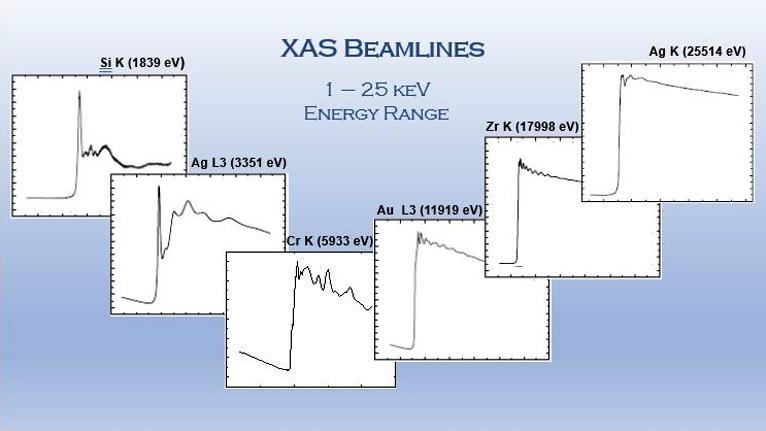About CAMD
Mission and Vision Statement
Organization Chart
Overview
The J. Bennett Johnston, Sr., Center for Advanced Microstructures and Devices (CAMD), is named for the father of its congressional sponsor, Senator J. Bennett Johnston, Jr. of Louisiana.
CAMD is a synchrotron radiation research center at Louisiana State University in Baton Rouge. The mission of CAMD is to provide infrastructure for research and education in synchrotron-based science and technology. The facility was built with a $25-million grant from the U.S. Department of Energy and its operations are state-funded by LSU. The heart of the facility is a 1.3 GeV electron storage ring that was built exclusively to provide synchrotron radiation. Research in basic sciences and nanofabrication is conducted by scientist and engineers from Louisiana universities, along with distinguished scientists from national and international institutions.
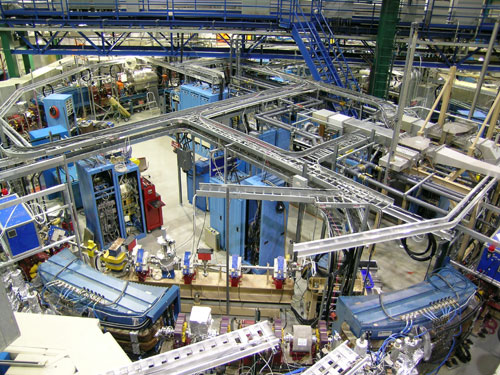
Scope
CAMD is the only state-funded synchrotron facility in the U.S. The spirit of the state appropriation is that LSU operate CAMD to benefit researchers in Louisiana in the areas of basic and applied sciences, and in developing technologies associated with nanostructures and devices. By providing X-rays and equipment, as well as a principal part of the technological expertise, CAMD forms a nucleus for the development of strong programs in nanofabrication, materials science and other targeted areas of scientific and technological exploration. This nucleus attracts scientists and engineers from Louisiana, across the U.S. and nations around the world. These individuals, along with the CAMD staff, provide the base of expertise necessary for technological development.
Electron Storage Ring
The centerpiece of the CAMD facility is a normal-conducting electron storage ring optimized for the production of soft X-rays. The machine is a low-energy-injected (200 MeV) Chasman-Green lattice designed to operate in the range of 1.2 - 1.5 GeV. The ring includes eight bending magnets with a radius of 2.928m. The dipole magnet chambers have two ports emitting > 70 mrad of synchrotron radiation each. Two straight sections are available for insertion devices, with one currently occupied by a superconducting wiggler.
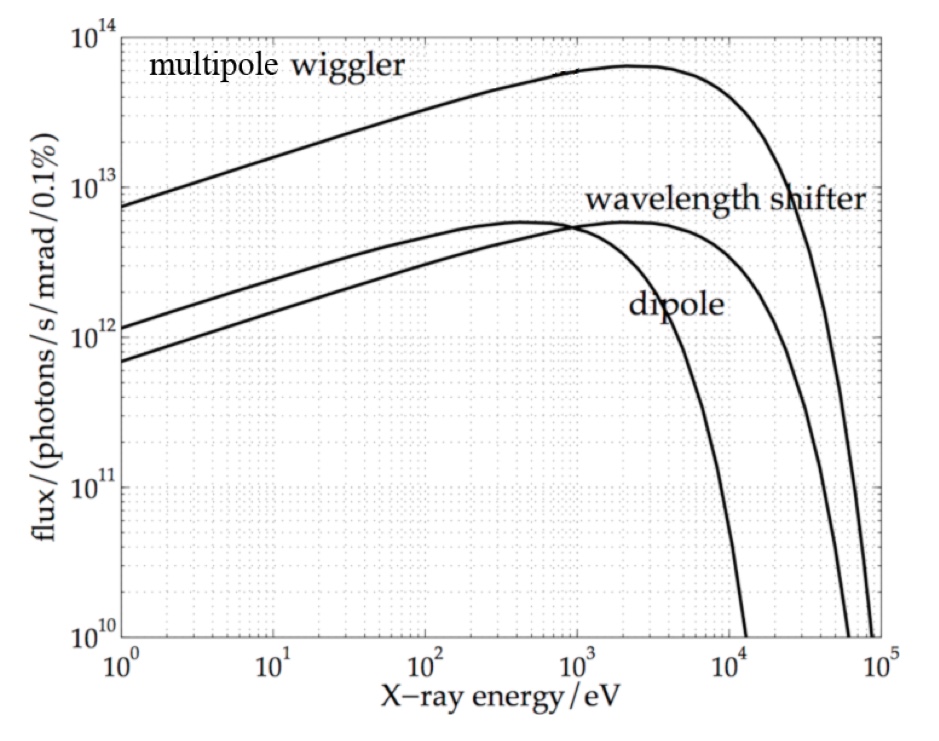
Electron Storage Ring Parameters
Beam Energy (GeV) 1.3
Beam Current (mA) 200
Bending radius (meters) 2.928
Critical wavelength 7.45
Critical Energy (keV) 1.66
Beam half-life (hours) 9.5
Harmonic number 92
Radiative power (watts/mrad/mA) 0.014
Injection energy (MeV) 200
Natural emittance (m-rad) ~2x10-7
Electron-beam width (mm) ~0.6
Electron-beam height (mm) ~0.15
Superconducting Wavelength Shifter
The wiggler consists of a 3-pole superconducting magnet with a maximum field of 7 T at the central pole and 1.55 T at the side poles. The horizontal deviation of the electron beam orbit at the central pole is equal to zero due to compensation of the beam trajectory realized by the superconducting magnet together with two normal conducting correctors at 0.6 T. Therefore, the magnetic-field strength of the central pole can be set to any value between zero and its maximum with the location of the source point fixed. This allows the critical wavelength to be tuned to a particular experiment.
Multipole Wiggler
The multipole wiggler consists of a 15-pole superconducting magnet with a maximum field of 7.5 T at the central pole and provides X-rays to 3 beamlines. The central beamline (PwX) is dedicated to X-ray absorption spectroscopy and X-ray diffraction studies, while HEXAS facilitates different experimental setups making use of X-ray absorption spectroscopy, and the Tomography beamline serves the tomography/medical physics/X-ray phase contrast imaging community.
Basic Science
CAMD's basic science research programs span a wide range of disciplines, including physics, chemistry, materials science, geology, environmental science, medical research, and archeology. Research thrusts include studies of thin-film magnetic alloys, catalysts, polymer and different organic materials, and clay minerals, glass, utilizing techniques including photoelectron spectroscopy, gas-phase photoionization and fluorescence spectroscopy, X-ray absorption spectroscopy, X-ray fluorescence spectroscopy, and tomography.
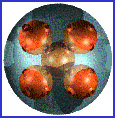
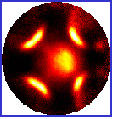
VUV Beamlines/Experimental Equipment
VLSPGM, 200-1200, eV, E/ΔE up to 10,000
3-m NIM, 9-28 eV, E/ΔE ~10,000 (high E); 50,000 (low E)
5-m TGM 25-400 eV
Experimental equipment includes angle-resolved two-axis hemispherical and an Omicron EA125 analyzer on the 5-m TGM, an Omicron EA125 analyzer on the VLSPGM for both synchrotron XPS and XAS, and a high-resolution SCIENTA-200 analyzer on the NIM beamline.
Sample CAMD XAS Specgtra
X-ray Beamlines /Experimental Equipment
XAS beamlines
DCM: 1 - 6 keV, ΔE = 0.05 – 0.5 eV
HEXAS: 4.5 - 25 keV, ΔE = 0.3 - 2 eV
WDCM: 7 - 18 keV, ΔE = 0.1 – 1.5 eV
PWX: 6 - 14 keV, ΔE = 0.3 - 1 eV
Equipment available at the X-ray beamlines include single-element and 7-element Ketek fluorescence detectors. More information here: beamline descriptions
SAXS beamline
SAXS at 12 keV, a wide q-Range allows detecting structures between 0.1-1000 nm.
More information here: SAXS beamline
XRD beamline
WXRD Energy range: 7 - 18 keV, Huber goniometer stage, 3 Mythen detectors
White Light, E < 40 keV for Energy dispersive measurements
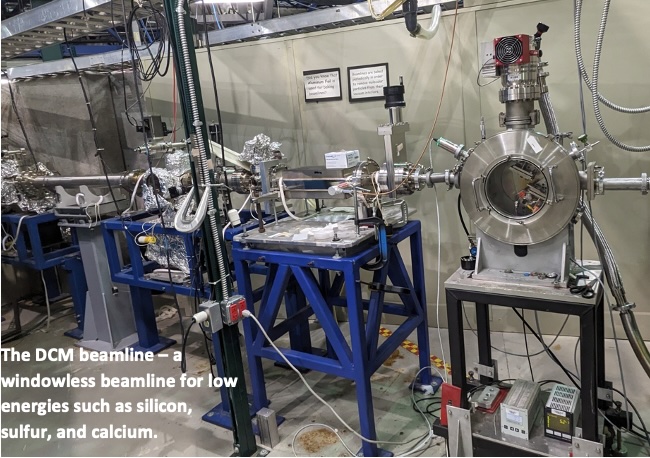
Service
CAMD provides a cooperative work environment and state of the art processing and metrology equipment open to researchers from industries and universities. The on site staff provides the local process expertise, support in research projects as well as full service to commercial customers.
LSU and Other Louisiana Faculty
CAMD works closely with the faculty of Louisiana State University and Louisiana's other Ph.D. granting institutions to assist in the development of strong scientific and technological programs at the facility. This involvement covers a wide range of fields including chemistry, physics and all engineering disciplines.
External Collaborators
CAMD Administration
Phillip Sprunger, Scientific Director/Interim Director
